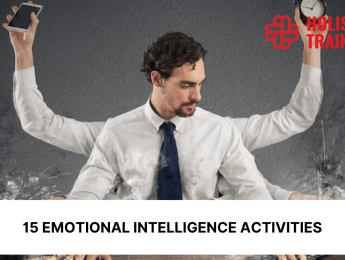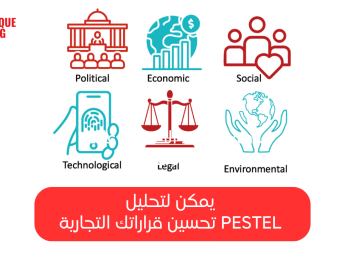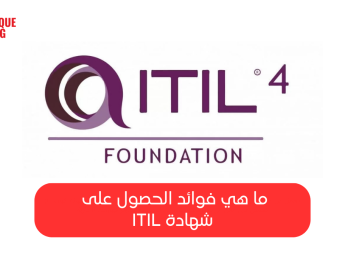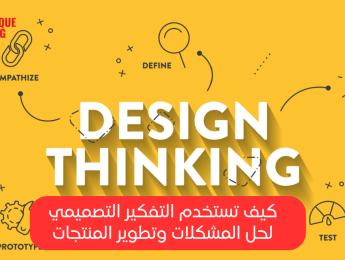- Table of Contents
- Introduction
- Deciphering the Emotional Choreography within Teams
- The Importance of Emotional Intelligence Activities in the Workplace
- Enhanced Communication and Collaboration
- Stress Reduction and Well-Being
- Conflict Resolution and Relationship Building
- Improved Self-Awareness
- Positive Workplace Culture
- Increased Adaptability and Resilience
- Empathy and Employee Satisfaction
- Strengthened Leadership and Team Dynamics
- How to Identify Triggers in the Workplace
- 1. Journaling for Self-Reflection
- 2. Emotional Intelligence Training Sessions
- 3. Peer Feedback and Observation
- 4. Facilitate Group Discussions on Triggers
- 5. External Facilitation
- 6. Use Technology for Real-time Feedback
- 7. Psychological Assessments
- 8. Encourage Proactive Communication
- 15 Emotional Intelligence Activities and Exercises for a Happier Team
- 1- Emotion Wheel Exploration
- 2- Empathy Circles
- 3- Role Reversal
- 4- Mindful Breathing Sessions
- 5- Feedback Frame
- 6- Gratitude Journaling
- 7- Problem-Solving Workshops
- 8- Active Listening Pairs
- 9- Artistic Expression
- 10- Conflict Resolution Simulation
- 11- Appreciation Circle
- 12- Emotion Charades
- 13- Values Exploration
- 14- Personal Emotion Regulation Plans
- 15- Collaborative Storytelling
- Challenges in Fostering Emotional Intelligence in the Workplace
- Resistance to Vulnerability
- Time Constraints
- Cultural Sensitivity
- Lack of Leadership Buy-In
- Skill Development
- Measuring Impact
- Addressing Past Wounds
- Sustainability
- Conclusion
Introduction
Workplaces are not merely spaces where tasks are accomplished; they are intricate webs of human interactions, emotions, and aspirations. To truly thrive in such environments, it's essential to acknowledge and nurture emotional intelligence – the ability to understand, manage, and harness emotions effectively. Understanding emotional dynamics within a team, identifying triggers that can spark negative emotions, and engaging in purposeful, emotional intelligence activities can significantly contribute to a happier and more productive workplace. In this blog post, we'll delve deep into the world of emotional intelligence activities and how they can transform the way teams function, paving the way for a harmonious and thriving work atmosphere.
Deciphering the Emotional Choreography within Teams
A team is a symphony of diverse individuals, each bringing their emotions, perspectives, and experiences to the table. The emotional dynamics within a team can be compared to an intricate dance, where everyone's steps contribute to the collective rhythm. Recognising and understanding these dynamics is the cornerstone of fostering emotional intelligence in the workplace.
One way to gain insight into emotional dynamics is by promoting open communication. Encouraging team members to express their feelings and thoughts, both positive and negative, creates an environment where emotions can be acknowledged and addressed constructively. Regular team meetings that incorporate emotional check-ins can be a powerful tool in achieving this. When individuals feel heard and understood, the team's emotional resonance strengthens, leading to improved collaboration and empathy.
The Importance of Emotional Intelligence Activities in the Workplace
According to TalentSmart, as cited by Zipdo, emotional intelligence is credited with contributing to approximately 58% of overall job success. This is why it’s important to foster emotional intelligence in the workplace, and this can be done through several activities. These activities play a pivotal role in shaping a positive and productive work environment. Here are key reasons highlighting their significance in fostering a culture of emotional intelligence within the workplace:
Enhanced Communication and Collaboration
Emotional intelligence activities facilitate open communication and collaboration among team members. By engaging in exercises that promote empathy and active listening, individuals develop a deeper understanding of their colleagues' perspectives, creating a foundation for effective teamwork. Improved communication leads to smoother collaboration and a more harmonious workplace.
Stress Reduction and Well-Being
Workplace stress is a common challenge, and emotional intelligence activities provide a constructive means of addressing it. Practices such as mindful breathing sessions and gratitude journaling contribute to stress reduction. By encouraging individuals to reflect on their emotions and adopt mindfulness techniques, these activities contribute to enhanced well-being and a more resilient workforce.
Conflict Resolution and Relationship Building
Emotional intelligence activities equip individuals with the skills needed for conflict resolution and relationship building. Through exercises like problem-solving workshops and appreciation circles, teams learn to navigate challenges collaboratively. These activities create a space for acknowledging and addressing conflicts constructively, fostering stronger interpersonal relationships and a positive team dynamic.
Improved Self-Awareness
Activities focused on emotional intelligence enhance self-awareness among team members. Whether through emotion wheel exploration or maintaining trigger journals, individuals gain insights into their emotional responses and patterns. This heightened self-awareness is foundational to personal and professional growth, allowing individuals to better understand and regulate their emotions.
Positive Workplace Culture
Emotional intelligence activities contribute to the creation of a positive workplace culture. When teams actively engage in activities that promote empathy, appreciation, and understanding, it cultivates a supportive atmosphere. This positive culture, built on emotional intelligence principles, enhances employee morale, job satisfaction, and overall organisational success.
Increased Adaptability and Resilience
The ability to adapt to change and bounce back from challenges is a hallmark of emotional intelligence. Activities such as collaborative storytelling and role reversal provide opportunities for teams to practise adaptability. By navigating diverse scenarios and perspectives, individuals develop resilience and the capacity to thrive in dynamic work environments.
Empathy and Employee Satisfaction
Activities that specifically target empathy, such as empathy circles and role reversal, contribute to higher employee satisfaction. When team members feel heard, understood, and supported emotionally, it positively impacts job satisfaction. Building a workplace culture that values empathy increases employee engagement and a more positive overall employee experience.
Strengthened Leadership and Team Dynamics
Emotional intelligence activities are instrumental in developing strong leadership and team dynamics. Leaders who actively participate in these activities set a positive example, fostering a culture of emotional intelligence throughout the organisation. Teams that practise emotional intelligence collectively navigate challenges, communicate effectively, and demonstrate strong cohesion.
In summary, integrating emotional intelligence activities into the workplace is essential for creating a positive, resilient, and collaborative organisational culture. These activities not only address immediate challenges but also contribute to the long-term success of individuals and the organisation as a whole, paving the way for a more emotionally intelligent and thriving workplace.
How to Identify Triggers in the Workplace
Identifying triggers in the workplace is a critical aspect of fostering emotional intelligence. Triggers are catalysts for strong emotional responses, and understanding them empowers individuals to manage their reactions more effectively. In this section, we'll delve deeper into the strategies for identifying workplace triggers, emphasising the importance of self-awareness and providing a comprehensive approach for teams to navigate their emotional landscapes.
1. Journaling for Self-Reflection
Encourage team members to maintain a trigger journal. In this journal, individuals can record instances that provoke emotional responses, capturing the context, emotions felt, and reactions triggered. Regularly reflecting on these entries allows individuals to identify patterns, uncover recurring triggers, and gain insights into the root causes of their emotional reactions. This practice not only enhances self-awareness but also provides a foundation for developing personalised strategies for managing triggers.
2. Emotional Intelligence Training Sessions
Statistics show that emotional intelligence training is employed by 75% of Fortune 500 companies, underscoring its widespread recognition and adoption in leading organisations. So, why not you? Conduct workshops or training sessions focused on emotional intelligence. These sessions can include discussions on common workplace triggers, case studies, and interactive activities. By creating a shared understanding of potential triggers, team members can collectively identify and empathise with each other's emotional responses. This shared knowledge contributes to a supportive team environment where individuals are more attuned to recognising and managing triggers collaboratively.
3. Peer Feedback and Observation
Foster a culture of open communication and constructive feedback within the team. Encourage team members to provide feedback on observed emotional reactions, helping individuals gain external perspectives on their triggers. Peer observations can shed light on triggers that individuals might not be fully aware of, fostering a collaborative and supportive atmosphere where team members actively contribute to each other's emotional intelligence growth.
4. Facilitate Group Discussions on Triggers
Organise group discussions where team members openly share their experiences with workplace triggers. This collective sharing of insights can reveal common triggers within the team and create a platform for brainstorming effective coping mechanisms. Facilitating these discussions creates a sense of shared responsibility for emotional well-being and establishes a team culture that values open dialogue about emotions.
5. External Facilitation
Bring in external facilitators or counsellors to conduct sessions on identifying and managing triggers. External perspectives can provide a fresh and objective viewpoint, offering valuable insights that may not be apparent within the team. These facilitated sessions can also create a safe space for individuals to explore and discuss their triggers openly, contributing to a more resilient and emotionally intelligent team.
6. Use Technology for Real-time Feedback
Leverage technology to gather real-time feedback on emotional states. Anonymous surveys or apps that allow team members to express their emotional well-being can provide valuable data on triggers affecting the team. Analysing this data collectively can help identify trends and patterns, enabling the team to address triggers before they escalate proactively.
7. Psychological Assessments
Consider incorporating psychological assessments into team development initiatives. These assessments, conducted by qualified professionals, can provide in-depth insights into individual and collective emotional landscapes. Understanding the psychological profiles of team members can uncover potential triggers and offer tailored strategies for emotional regulation.
8. Encourage Proactive Communication
Create a workplace environment that encourages proactive communication about triggers. Team members should feel comfortable expressing concerns or potential triggers before they escalate. Implementing a transparent and supportive communication structure fosters a culture where individuals take responsibility for their emotional well-being and collaboratively work towards a trigger-aware workplace.
In short, identifying triggers in the workplace is a multifaceted process that involves self-reflection, open communication, and collective awareness. By implementing these strategies, teams can create an environment where emotional intelligence flourishes, leading to improved teamwork, enhanced well-being, and a more resilient and adaptable workforce.
15 Emotional Intelligence Activities and Exercises for a Happier Team
1- Emotion Wheel Exploration
Introduce the concept of an emotion wheel, a visual tool that aids individuals in identifying and articulating their emotions. This activity fosters self-awareness by encouraging team members to explore and express their feelings. The emotion wheel becomes a shared reference point for the team, promoting open communication and understanding of diverse emotional experiences.
2- Empathy Circles
Divide the team into small groups and assign each member a partner. Through sharing personal experiences, participants practise active and empathetic listening. This exercise not only enhances individual empathy but also strengthens the connections within the team. Empathy circles create a space for vulnerability and understanding, nurturing a supportive team culture.
3- Role Reversal
Team members pair up and temporarily assume each other's roles. By experiencing the responsibilities, challenges, and perspectives of their counterparts, team members develop a profound understanding of each other. This activity cultivates empathy, breaks down silos, and promotes a more holistic approach to teamwork.
4- Mindful Breathing Sessions
Integrate regular mindful breathing sessions into the work routine. Mindful breathing is a powerful tool for emotional regulation, reducing stress, and promoting mental clarity. By incorporating these sessions, the team can collectively engage in a practice that enhances emotional well-being and contributes to a calmer, more focused work environment.
5- Feedback Frame
Teach the team the art of giving constructive feedback using a structured "feedback frame." By including observations, feelings, needs, and requests in their feedback, team members learn a non-confrontational approach to communication. This technique promotes a positive feedback culture, emphasising constructive dialogue and mutual understanding.
6- Gratitude Journaling
Encourage team members to maintain a gratitude journal where they record things they are thankful for. This simple yet powerful practice promotes a positive mindset, fostering emotional well-being and gratitude. Sharing entries within the team can create a culture of appreciation and acknowledgment.
7- Problem-Solving Workshops
Organise workshops that focus on collaborative problem-solving. By working together to overcome challenges, team members build a sense of unity and shared accomplishment. This collaborative approach not only strengthens teamwork but also enhances the team's ability to adapt and navigate complex situations.
8- Active Listening Pairs
Team members pair up and take turns sharing personal experiences while their partner practices active listening. This activity hones listening skills and encourages empathy. As team members actively engage in deep listening, they develop a better understanding of each other's perspectives, fostering stronger interpersonal connections.
9- Artistic Expression
Provide an outlet for artistic expression, such as painting, drawing, or writing. Art allows individuals to channel and process their emotions creatively and therapeutically. This activity serves as a cathartic release and encourages team members to express themselves in non-verbal ways, contributing to emotional well-being.
10- Conflict Resolution Simulation
Create hypothetical conflict scenarios and have teams work together to resolve them. This exercise sharpens conflict resolution skills and encourages open dialogue. Team members learn to navigate disagreements constructively, contributing to a more harmonious and emotionally intelligent work environment.
11- Appreciation Circle
Form a circle and have each team member express appreciation for the person on their right. This simple activity cultivates a culture of appreciation and boosts morale. By vocalising positive sentiments, team members create a supportive atmosphere that values individual contributions.
12- Emotion Charades
Play a game of charades where team members act out emotions without using words. This activity enhances emotional recognition and understanding. It adds an element of fun to the workplace, promoting lighthearted interactions and reinforcing emotional intelligence through playful engagement.
13- Values Exploration
Facilitate a session where team members discuss their core values. This exercise fosters a deeper connection among team members and aligns their motivations. Understanding each other's values promotes a shared sense of purpose, strengthening the team's cohesiveness.
14- Personal Emotion Regulation Plans
Guide team members in creating individual emotion regulation plans. These plans can include strategies such as taking short breaks, practising mindfulness, or engaging in physical activity when emotions run high. Customised plans empower individuals to manage their emotions effectively, contributing to a more emotionally resilient team.
15- Collaborative Storytelling
Start a story and have each team member contribute a sentence. This activity encourages creativity, adaptability, and cooperation. Through collaborative storytelling, team members learn to build on each other's ideas, fostering a culture of shared ownership and innovative thinking.
Emotional intelligence activities are not just team-building exercises; they are transformative tools that contribute to a happier, more cohesive, and emotionally intelligent team. By actively engaging in these activities, teams can cultivate a workplace where individuals not only succeed but also thrive emotionally, creating a positive ripple effect on productivity, innovation, and overall team well-being.
Challenges in Fostering Emotional Intelligence in the Workplace
Fostering emotional intelligence in the workplace is a commendable endeavour, but it comes with its share of challenges. Recognising and addressing these challenges is crucial for creating effective strategies to enhance emotional intelligence within a team.
Resistance to Vulnerability
Encouraging open expression of emotions requires individuals to be vulnerable. Some team members may resist sharing their feelings due to fear of judgement or concerns about how their emotions might be perceived. Overcoming this resistance necessitates building a culture where vulnerability is seen as a strength rather than a weakness.
Time Constraints
Incorporating emotional intelligence activities into the work routine can be challenging, especially in fast-paced environments where time is a precious commodity. Teams may find it difficult to dedicate sufficient time to activities that promote self-reflection and emotional connection. Balancing productivity goals with the need for emotional intelligence initiatives is an ongoing challenge.
Cultural Sensitivity
In diverse workplaces, cultural differences can influence how emotions are expressed and perceived. What may be considered acceptable emotional expression in one culture could be interpreted differently in another. Navigating these cultural nuances requires a thoughtful and inclusive approach to ensure emotional intelligence initiatives are relevant and respectful of diverse perspectives.
Lack of Leadership Buy-In
The success of fostering emotional intelligence often depends on leadership support and commitment. If leaders do not actively endorse and participate in these initiatives, it may be challenging to instil a culture of emotional intelligence throughout the organisation. Leadership buy-in is crucial for creating a top-down approach that permeates the entire team.
Skill Development
While the concept of emotional intelligence is widely acknowledged, developing the necessary skills can be a hurdle. Team members may lack the tools and knowledge to manage emotions effectively, provide constructive feedback, or navigate conflicts. Providing ongoing training and resources is essential to bridge this gap and ensure continuous skill development.
Measuring Impact
Quantifying the impact of emotional intelligence initiatives can be challenging. Unlike traditional metrics that measure tangible outcomes, emotional intelligence is often gauged through subtle shifts in team dynamics and communication. Establishing reliable metrics to measure the success of these initiatives requires thoughtful consideration and may involve a combination of qualitative and quantitative assessments.
Addressing Past Wounds
Individuals bring their past experiences, including workplace trauma or unresolved conflicts, into their current roles. Fostering emotional intelligence may require addressing these past wounds, which can be a delicate process. Creating a safe space for individuals to heal and move forward is essential for the success of emotional intelligence initiatives.
Sustainability
Implementing emotional intelligence activities may yield positive results initially, but sustaining these efforts over the long term poses a challenge. Without consistent reinforcement and integration into the organisational culture, the benefits of emotional intelligence initiatives may diminish over time. Maintaining momentum requires ongoing commitment and adaptability.
In conclusion, navigating the challenges of fostering emotional intelligence in the workplace requires a nuanced and persistent approach. By proactively addressing these challenges, organisations can create an environment where emotional intelligence thrives, contributing to healthier team dynamics, improved communication, and a more resilient and adaptable workforce.
Conclusion
Emotional intelligence is not just a buzzword; it's a transformative force that can shape workplaces into thriving ecosystems of well-being and productivity. By understanding emotional dynamics, identifying triggers, and engaging in purposeful activities, teams can elevate their emotional intelligence and navigate the complex landscape of human interactions with finesse. As the fabric of workplaces becomes woven with emotional intelligence, we can look forward to happier teams, healthier relationships, and an inspiring work environment where individuals not only succeed but also flourish.
As you embark on this journey of fostering emotional intelligence within your team, remember that continuous growth is key. If you're eager to delve even deeper into the realm of emotional intelligence and equip your team with comprehensive skills, make sure to explore our course ‘Excelling in Emotional Intelligence.’ This course offers a structured approach to enhancing emotional intelligence, providing invaluable tools and insights to create a workplace where emotional intelligence thrives, paving the way for unparalleled success and fulfilment. Enrol now!





















